

![]()
![]()
![]()
![]()

Had he been flying on the 14th October 1322, then an entirely different scene would have been observed, Smoke from burning towns and villages would have reduced visibility to a few hundred yards, the Gliding field as far as Rievaulx Abbey would have revealed the countless encampments and cantonments of a large English Army and hidden in the smoke, the steady advance of the Scottish Army under the command of King Robert the Bruce. from a fiercely blazing Northallerton. Of course the young pilot never saw any of this in the year of our Lord 2002. Eventually the thermals ran out and the pilot headed back to the landing field, he, quite possibly was unaware of passing over 'Sword Rigg slack.' As he flew low over a young forestry plantation he barely glanced at an old RC chapel in a walled enclosure in a spot called 'Scotch Corner.' As he flared out for landing the ghosts of the past vanished.
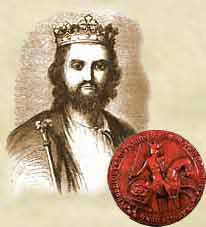 So let us start at the beginning. 1322 was an eventful year for Edward II. It started badly with a continuing revolt by his cousin, the Earl of Lancaster and Humphrey de Bohun, Earl of Hereford after Edward II reneged on undertakings made at a parliament in 1321 to limit him and his favourites blatant abuses of power. Edward was further enraged by the Judicial murder of his favourite pretty boy, the Breton, Piers Gaveston whose head was presented to the Earl of Lancaster. Edward showing unusual energy and acumen enlisted the aid of Sir Andrew Harclay and defeated Lancaster and Hereford at the battle of Boroughbridge on the 16th and 17th March 1322.
So let us start at the beginning. 1322 was an eventful year for Edward II. It started badly with a continuing revolt by his cousin, the Earl of Lancaster and Humphrey de Bohun, Earl of Hereford after Edward II reneged on undertakings made at a parliament in 1321 to limit him and his favourites blatant abuses of power. Edward was further enraged by the Judicial murder of his favourite pretty boy, the Breton, Piers Gaveston whose head was presented to the Earl of Lancaster. Edward showing unusual energy and acumen enlisted the aid of Sir Andrew Harclay and defeated Lancaster and Hereford at the battle of Boroughbridge on the 16th and 17th March 1322.
Encouraged by his success in crushing his rebellious Lords, Edward II decided to invade Scotland after the clergy in this year granted fourpence in the Merk of tithes raised, to Edward II to carry on the war against Scotland. An action for which they would later pay most heavily. Edward accompanied by Queen Isabella marched to Edinburgh with an army estimated to be over 100,000 strong. This number is like all medieval estimates, grossly inflated and according to the Lanercost chronicles, could not have exceeded 60,000 men based on the victualling returns.
Since 1314 King Robert the Bruce had sought a peace treaty in order that the war ravaged realm of Scotland could recover. Edward II was obdurate and impervious to the many pleas from his lords, so, each year, the Bruce instigated forays into northern England to extract tribute and booty to help rebuild the bankrupt Scottish economy. He hoped the forays would put pressure on the English barons to persuade King Edward II to negotiate a
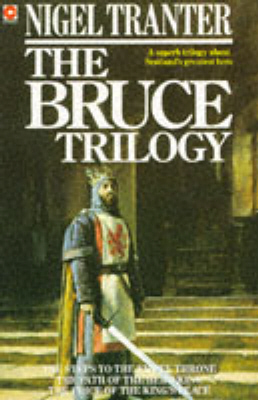 peace treaty which would recognise Scotland as an Independent Kingdom with himself as it's rightful king. Accordingly he sent Sir James Douglas (The Black Douglas) and Sir Thomas Randolph (The Earl of Moray) in a series of wide ranging raids into Northumberland, Cumberland, Lancashire, Durham and Yorkshire to extract tribute. For a medium sized town this was 2000 Silver Merks or £1,300 English pounds. (Worth £140,000 by today's standards.)
peace treaty which would recognise Scotland as an Independent Kingdom with himself as it's rightful king. Accordingly he sent Sir James Douglas (The Black Douglas) and Sir Thomas Randolph (The Earl of Moray) in a series of wide ranging raids into Northumberland, Cumberland, Lancashire, Durham and Yorkshire to extract tribute. For a medium sized town this was 2000 Silver Merks or £1,300 English pounds. (Worth £140,000 by today's standards.)
Each year the coffers of Scotland were slowly replenished and the process of rebuilding started. Despite the serious ebbing of a high percentage of the northern English economy to Scotland, Edward still refused to negotiate and a good number of his lords were in revolt. His position was becoming untenable. Edward attacked Scotland several times, the last being in 1319 when he tried to retake Berwick on Tweed. That failed when Bruce led a long range foray into England, forcing Edward to retreat. Now Edward had beaten his two most dangerous enemies at Boroughbridge. Emboldened by this success, Edward struck at Scotland.
Bruce himself led an expedition of 8000 light cavalry and Highland Clansmen supported by the galley's of the Lord of the Isles in a long range sweeping raid into the northwest of England, sacking Preston and pillaging scores of other towns. By doing this, King Robert hoped that Edward II would turn back to defend his northern shires, but instead, Edward II fell out with Sir Andrew Harclay on policy and ordered him to confine Bruce to Northern England whilst he, Edward ravaged Scotland. Sir Andrew Harclay protested at this unmilitary division of the English forces which would leave the English Army unbalanced and short of Archers. Edward backed by the Earl of Richmond (John of Brittany) and his favourites, the, Le DeSpensers summarily dismissed the only competent military leader he had (Sir Andrew Harclay had won the battle of Boroughbridge whereas in the same action, Le DeSpensers had lost theirs.) Sir Andrew Harclay, retired in a huff to Carlisle with his army and came to an accommodation with King Robert on the lines of, 'Don't mess with me and I'll leave you alone' variety.
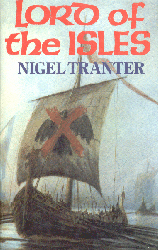 When King Robert heard this news, he returned post haste by the Solway Sands in a marvellous move of logistics, involving tides, mudflats, quicksands from Morecambe bay to Silloth in less than a day. He reached the Scottish border in late July a day ahead of Edward and immediately mobilized his forces. King Edward occupied Edinburgh and Leith setting up home in Holyrood with Queen Isabella. It is estimated that three-quarters of the populace had fled the city before Edward arrived to be welcomed and feted by the remaining quarter of the populace who thought that preferment would come their way. The castle had been slighted (Made Indefensible) by the Earl of Moray in 1314 and true to Robert the Bruce's wishes, had not been rebuilt so that it could not be held against him. (Bruce believed in Mobile warfare, not static.) Edwards army found there was no foraging to be had. Foraging parties were ambushed by the Mosstroopers under Sir James Douglas. The Earl of Surrey, Hugh de Warrene is recorded as making the comment about an old lame cow which was all the English Army had managed to capture. 'Yonder cow is the dearest piece of beef I have ever seen, as it has cost a thousand pound or more!' Scots black humour came to the fore once more and grim jokes about the English waiting for next years harvest began to circulate. Food became even scarcer, even forage for the horses, but this did not really matter too much as the English were now eating the horses, so Edward did what he should have done earlier, organised supply ships to sail from the Humber, Tees and Tyne.
When King Robert heard this news, he returned post haste by the Solway Sands in a marvellous move of logistics, involving tides, mudflats, quicksands from Morecambe bay to Silloth in less than a day. He reached the Scottish border in late July a day ahead of Edward and immediately mobilized his forces. King Edward occupied Edinburgh and Leith setting up home in Holyrood with Queen Isabella. It is estimated that three-quarters of the populace had fled the city before Edward arrived to be welcomed and feted by the remaining quarter of the populace who thought that preferment would come their way. The castle had been slighted (Made Indefensible) by the Earl of Moray in 1314 and true to Robert the Bruce's wishes, had not been rebuilt so that it could not be held against him. (Bruce believed in Mobile warfare, not static.) Edwards army found there was no foraging to be had. Foraging parties were ambushed by the Mosstroopers under Sir James Douglas. The Earl of Surrey, Hugh de Warrene is recorded as making the comment about an old lame cow which was all the English Army had managed to capture. 'Yonder cow is the dearest piece of beef I have ever seen, as it has cost a thousand pound or more!' Scots black humour came to the fore once more and grim jokes about the English waiting for next years harvest began to circulate. Food became even scarcer, even forage for the horses, but this did not really matter too much as the English were now eating the horses, so Edward did what he should have done earlier, organised supply ships to sail from the Humber, Tees and Tyne.
On receipt of this news on the 6th August, Robert the Bruce requested Angus Og, Lord of the Isles to sail some of his galleys round the North of Scotland to the Forth and institute a blockade. On the 10th August a lone Galley with the Black ship emblem of the MacDonald's on it's sail, under the command of John of Islay,(Angus Og's Eldest Son and heir) sped up the Forth to Culross to report that Angus Og's fleet was in the Tay and had
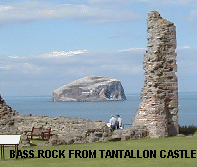 already sent scouting ships down to the Farne islands and the Bass Rock with more galleys sent down to blockade the Humber, Bridlington, Whitby, Hartlepool and Tynemouth. King Robert was delighted at this news and knighted young John of Islay straightaway.
already sent scouting ships down to the Farne islands and the Bass Rock with more galleys sent down to blockade the Humber, Bridlington, Whitby, Hartlepool and Tynemouth. King Robert was delighted at this news and knighted young John of Islay straightaway.
Several days later, Edward had to grind his teeth in anger with the chagrin of seeing three English supply ships laden with foodstuffs, captured as prizes of war off the Bass Rock, and sail past Edinburgh, up the forth to Culross where they were unloaded and their contents distributed to the Scottish Army which by now numbered at least 25,000. Angus Og's galleys captured most of the English Supply ships, those not captured were driven ashore to be wrecked on the Northumbrian cliffs. A few others, less seaworthy were lost at sea in the severe gales during August. A Group of Whitby merchants wrote a letter of complaint to King Edward that they could not move their goods from the port due to the presence of 'Scottish pirates and privateers.'
 What morale there was soon slumped into apathetic misery despite the efforts of a small minority of officers who tried to raise their morale, and inevitably the English Army became a barely controllable, sick and semi mutinous rabble. On the 2nd of September, Holyrood Abbey was set on fire and in a fit of petulance and pique, Edward ordered the valedictory slaughter of the remaining inhabitants of Edinburgh. The English soldiery ran amok, killing some 5,000 men, women, children and even babies were slaughtered and disembowelled in the streets and closes in an act of blood crazed savagery not seen since Edward I sacked the city of Berwick on Tweed, slaughtering 17,000 of it's inhabitants to be left rotting where they fell for months afterwards. Only a few of the wretched inhabitants of Edinburgh managed to escape.
What morale there was soon slumped into apathetic misery despite the efforts of a small minority of officers who tried to raise their morale, and inevitably the English Army became a barely controllable, sick and semi mutinous rabble. On the 2nd of September, Holyrood Abbey was set on fire and in a fit of petulance and pique, Edward ordered the valedictory slaughter of the remaining inhabitants of Edinburgh. The English soldiery ran amok, killing some 5,000 men, women, children and even babies were slaughtered and disembowelled in the streets and closes in an act of blood crazed savagery not seen since Edward I sacked the city of Berwick on Tweed, slaughtering 17,000 of it's inhabitants to be left rotting where they fell for months afterwards. Only a few of the wretched inhabitants of Edinburgh managed to escape.
Sir James Douglas and Sir Thomas Randolph with extra Highland Clansmen sent by Bruce, harried the retreating English rabble unmercifully so much so that only half of the army which had marched into Scotland, stumbled and reeled out of the Country. No army is at its best during a rout and it is not surprising that many atrocities were committed , some by Edwards direct orders.
 Melrose from being set on fire and much too late to save the life of the gentle Godly Abbot William Peebles. Sir James Douglas sent word to Abbot Peebles that the main van of the English army were advancing on Melrose, and that he and his monks should flee for safety in the nearby forests until it was safe to return. However, a number of monks were very sick and racked with fevers and the Abbot refused to desert them. In accordance with
his principles he remained and so did the rest of the monks. Abbot William Peebles waited at the main doors with his Crozier in his hand as the English soldiers arrived. Despite his being a man of the cloth, they seized him, stripped him and crucified him to the Abbey doors and then shot his body full of arrows. Meanwhile other Soldiers were committing carnage amongst the monks, practising the most heinous tortures on these Godly men. A Serving boy was the sole surviving witness. Several English Nobles tried to stop this carnage and bestiality but desisted after being threatened. King Robert who greatly loved and respected the saintly old Abbot, was moved to tears at the news and vowed that the English churchmen who had financed Edwards expedition would pay dearly for their sins.
Melrose from being set on fire and much too late to save the life of the gentle Godly Abbot William Peebles. Sir James Douglas sent word to Abbot Peebles that the main van of the English army were advancing on Melrose, and that he and his monks should flee for safety in the nearby forests until it was safe to return. However, a number of monks were very sick and racked with fevers and the Abbot refused to desert them. In accordance with
his principles he remained and so did the rest of the monks. Abbot William Peebles waited at the main doors with his Crozier in his hand as the English soldiers arrived. Despite his being a man of the cloth, they seized him, stripped him and crucified him to the Abbey doors and then shot his body full of arrows. Meanwhile other Soldiers were committing carnage amongst the monks, practising the most heinous tortures on these Godly men. A Serving boy was the sole surviving witness. Several English Nobles tried to stop this carnage and bestiality but desisted after being threatened. King Robert who greatly loved and respected the saintly old Abbot, was moved to tears at the news and vowed that the English churchmen who had financed Edwards expedition would pay dearly for their sins.
The demoralised English army were by now in a state of mutiny. Badly led by grossly incompetent leaders, without adequate food or clothing, forced to flee from an implacable victorious enemy in downpours of rain, walking in glutinous mud, fording rain swollen rivers, forced to sleep in the open and staggering wearily further and further south towards York, where there was a promise of fresh reinforcements of southern levies and plenty of food round the rich lands of the Abbeys and monasteries. Each day men deserted, fell out sick and diseased, too ill to move or fell foul of the Scots who were hotly pursuing them. By the time they reached the encampments round Rievaulx Abbey, Byland, Shaws moor and Scawton Moor, only one third of the English army remained.
Here they were joined by some 25,000 southern levies and the Lanercost Chronicles indicate that some 48,000 English men at arms, Hobelars and auxiliaries were being fed daily in addition to the Archers and general conscripts who possibly made up another 15,000. Medieval estimates of 200,000 men are wildly inaccurate as the available food supply locally could not possibly support such great numbers. In 1321 an outbreak of cattle plague had reduced the herds to a quarter of the 1319 figure. Rievaulx Abbey made its wealth from wool, having flocks totalling some 14,000 sheep. The wet autumn meant the loss of the hay crop and reduced yields of corn.
The task was given to Sir Walter Stewart the hereditary High Steward of Scotland, who with three hundred mosstroopers was to break through to Rievaulx Abbey as soon as the English line on the lip of Roulston Scar was broken by the Scottish Army. Bruce ordered Sir James Douglas to light more fires and increase the amount of smoke to conceal his movements from the English commander the Earl of Richmond. This was done and Bruce concealed two thirds of his army in clumps of trees below a gully which led round the rear of Roulston Scar.

What the Earl of Richmond had not observed was that the gully the Scots were advancing up was very narrow and constricted with steep slopes on each sides making movement on horseback very difficult. He found out too late that he could only attack on a very narrow front which the Scots ably defended by forming a schiltrom with their long spears which completely turned the first English charge into a bloody charnel house of dead, dying and injured horses and men. The Earl of Richmond sent down more men and at this point the Bruce sent up his highlanders under Neil Campbell of Loch Awe and Robert MacGregor to assault both flanks of the English positions on the Scar and stop the stone bombardment. The lightly clad clansmen soon scaled both flanks driving the English back
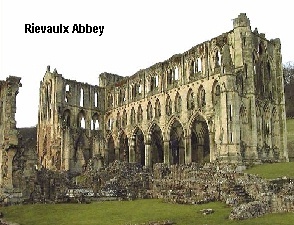 with their fierce attacks and Gaidhlig war cries, thus forcing the Earl of Richmond to pull in all his picquets and guards to throw into the Battle on the top of the Scar. This left the alternative route unguarded and then Robert the Bruce struck hard!
with their fierce attacks and Gaidhlig war cries, thus forcing the Earl of Richmond to pull in all his picquets and guards to throw into the Battle on the top of the Scar. This left the alternative route unguarded and then Robert the Bruce struck hard!
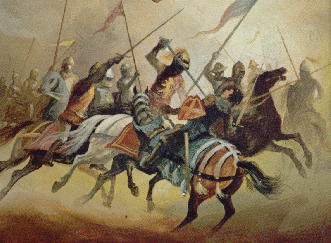 Bruce formed his men into three arrowhead divisions and with the trumpeters blasting out the charge he led his men stirrup to stirrup in an all out thundering gallop, his Lion Rampant Banner flying bravely in the hands of Scrymgeour his standard bearer and with a great cry of ' A Bruce! A Bruce!' they came galloping out of the smoke and smashed through the English lines causing widespread panic and destruction . Even a tightly disciplined army would have found it difficult to withstand such a charge. The demoralised English mostly deserted their posts and ran for their lives but some salvaged what honour there was for England that day by standing their ground even though their stand was useless. What casualties Bruce's mosstroopers suffered that day came from the arrows of the few English archers who bravely stood their ground before being hacked down.
Bruce formed his men into three arrowhead divisions and with the trumpeters blasting out the charge he led his men stirrup to stirrup in an all out thundering gallop, his Lion Rampant Banner flying bravely in the hands of Scrymgeour his standard bearer and with a great cry of ' A Bruce! A Bruce!' they came galloping out of the smoke and smashed through the English lines causing widespread panic and destruction . Even a tightly disciplined army would have found it difficult to withstand such a charge. The demoralised English mostly deserted their posts and ran for their lives but some salvaged what honour there was for England that day by standing their ground even though their stand was useless. What casualties Bruce's mosstroopers suffered that day came from the arrows of the few English archers who bravely stood their ground before being hacked down.
Bruce's Standard bearer Scrymgeour took an arrow in his arm which did no damage due to the chain mail suit. Sir Gilbert hay lost his horse which was shot through the head and was nearly trampled by his following men. Backwards and forwards, Bruce's force charged scattering the surviving English troops. No quarter was given and the English casualties were horrendously heavy. Finally only the dead and the victorious Scots remained in command of the battlefield.
 trumpets, to see Bruce's host on the escarpment and with a roar of triumph, Douglas' men surged forward and the English army dispersed , some in flight, most in surrender when Sir James Douglas ordered that the Scots gave quarter. The Corrie was a difficult place to escape from and very few English made a clean getaway. The Earl of Richmond surrendered his sword to Sir James Douglas as did his lieutenants, well those who were still alive and unwounded, that is. Twenty English knights lay amid the dead with twice as many wounded. The Scots ushered their prisoners up the hill to present to King Robert who it is recorded sat hunched, hawk-like on his horse at the top of the escarpment. Sir James Douglas and Sir Thomas Randolph (himself wounded by a spear thrust in his sword arm) presented their prisoners to the King.
trumpets, to see Bruce's host on the escarpment and with a roar of triumph, Douglas' men surged forward and the English army dispersed , some in flight, most in surrender when Sir James Douglas ordered that the Scots gave quarter. The Corrie was a difficult place to escape from and very few English made a clean getaway. The Earl of Richmond surrendered his sword to Sir James Douglas as did his lieutenants, well those who were still alive and unwounded, that is. Twenty English knights lay amid the dead with twice as many wounded. The Scots ushered their prisoners up the hill to present to King Robert who it is recorded sat hunched, hawk-like on his horse at the top of the escarpment. Sir James Douglas and Sir Thomas Randolph (himself wounded by a spear thrust in his sword arm) presented their prisoners to the King.
The Earl of Richmond (whom Bruce had last met at Stirling Castle when as John of Brittany before being made Earl, he had gloated over the death of Sir William Wallace) was insolent to King Robert and Bruce had him hustled away under close guard as a valuable Hostage. (It took three years to raise the 50,000 silver Merks which freed him from prison in Stirling Castle. By Comparison the Town of Richmond only paid tribute of 1,200 Silver Merks to prevent it from being sacked and burned by Bruce's army.) Other Notable prisoners were the badly wounded Sir Thomas de Uthred the keeper of the Royal hunt at Pickering castle who Sir James Douglas singled out for praise as a worthy fighter and Sir Ralph Cobham who was reckoned to be the first knight of England.
Also captured were Messieur Henry De Sulliey, Grand Butler of France with a party of ten other French Knights who were on a visit to Queen Isabella and as guests of King Edward II were expected to fight for him according to the law and codes of knightly chivalry. King Robert warmly welcomed them and invited them to come back with him to Scotland as his honoured guests, which they accepted with alacrity. Now all that was left to do was clear up the battlefield, bury the dead, succour the wounded and then ransack as much wealth as possible from the defenceless supine counties of Northern England.
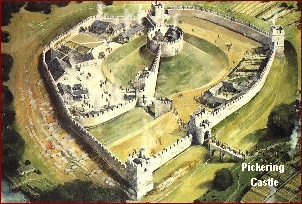
100 of his bodyguard to sell their lives in buying him some time to escape. This they did do and delayed the Scots sufficiently to allow Edward to slip away. He was pursued by Stewart and fifty of his men for many miles but in the darkness they lost Edward in the gathering twilight and mists on the road to Nunnington. Edwards horse became lame and He was forced to seek a fresh mount at Pickering Castle where a day later his grey charger became a prize of War and was presented to King Robert.
Edward eventually arrived at Bridlington and requested the keeper of the castle to provide him with a ship to take him to London. The keeper escorted Edward to a lookout tower and grimly pointed out in the bay, three long sleek galleys belonging to Angus Og. Escape by sea was impossible, no trading galliot could outrun these greyhounds of the sea. Information was then received that the Scots were approaching the outskirts of Bridlington, and without further ado Edward and his guards then rode pellmell to York narrowly escaping capture twice, but losing his shield in the process. (Bruce later returned this shield to Edward as an unspoken challenge, Fight or Negotiate peace! Edward did not rise to the challenge and this later was one of the reasons he was later deposed.)
From York, Edward and his party made their way to the safety of Burstwick in Holderness and from thence to London there to be later reunited with Queen Isabella who was not best pleased at being abandoned by Edward, having to make a perilous journey in disguise as a Nun to Tynemouth Priory. She herself only narrowly escaping capture at Rievaulx. Edwards defeat and headlong flight left the whole of the north of England open to the Scottish army to extract tribute, to pillage and loot at its leisure. What was left of Edwards army abandoned their weapons and retreated to York which being a fortified City was the only refuge open to them. They locked the gates and stayed put until it was known the Scots army had left the county. King Edward left behind his finery, personal treasury, armour and to his everlasting shame, the great seal of England at Rievaulx Abbey, in all 100 horse loads of his personal treasury and effects with a combined value of 260,000 silver Merks.
 Many of the monasteries and priories attempted to save their valuables by moving them south before the Scottish army arrived. For example, Prior Robert of Bridlington decided to move to Goxhill in Lincolnshire with all the valuables and most of the canons, leaving just 12 hours before the Scottish Army arrived in force. However he left a poisoned chalice behind for Robert of Bainton the senior canon left behind. The Scots were plundering the countryside round about and were threatening the priory. Canon Robert rode to Malton, where King Robert had set up his headquarters in the slighted Castle and sought audience with the Bruce. King Robert agreed not to despoil the priory if canon Robert provided Bread, meat and wine to the quantity of 18 horse loads per day whilst the Scots were in the area and this was faithfully carried out for 12 days until the Scottish Army had left. The priory was left intact and unharmed. Poisoned chalice? I hear you say? Yes, Canon Robert and the canons who remained were accused of aiding the enemy and to prevent King Edward taking draconian action against them, they were excommunicated by Archbishop William of melton and later on in December 1322 they were quietly given absolution and reinstated.
Many of the monasteries and priories attempted to save their valuables by moving them south before the Scottish army arrived. For example, Prior Robert of Bridlington decided to move to Goxhill in Lincolnshire with all the valuables and most of the canons, leaving just 12 hours before the Scottish Army arrived in force. However he left a poisoned chalice behind for Robert of Bainton the senior canon left behind. The Scots were plundering the countryside round about and were threatening the priory. Canon Robert rode to Malton, where King Robert had set up his headquarters in the slighted Castle and sought audience with the Bruce. King Robert agreed not to despoil the priory if canon Robert provided Bread, meat and wine to the quantity of 18 horse loads per day whilst the Scots were in the area and this was faithfully carried out for 12 days until the Scottish Army had left. The priory was left intact and unharmed. Poisoned chalice? I hear you say? Yes, Canon Robert and the canons who remained were accused of aiding the enemy and to prevent King Edward taking draconian action against them, they were excommunicated by Archbishop William of melton and later on in December 1322 they were quietly given absolution and reinstated.
King Robert when at Malton summoned all the Abbots and senior churchmen into his presence. Abbot John of Rievaulx like all the other churchmen was dressed in rich apparel with bejewelled and gold encrusted vestments and protesting volubly about the desecration of his Abbey. Bruce silenced him, although there is no written record of what was actually said Bruce related to Abbot John what had happened to Abbot William Peebles at Melrose Abbey which was a Cistercian foundation, a daughter house of Rievaulx and that he was party along with other Churchmen to financing King Edward's murderous war against Scotland. Now was the day of reckoning, they would all have to pay the price. The price was the complete pillaging of all valuables and trade goods the only saving grace from the Churchmen's point of view was that the Abbey buildings were unharmed and the Monks were not tortured or murdered as had been the fate of Scottish Monks.
King Robert grimly reminded them that Scotland had been Pillaged and its infrastructure destroyed by the English Armies and now He was going to extract every last piece of treasure that was to be had, starting with them. Thereupon the Clerics were all forcibly stripped of their rich apparel, golden rings and other finery and given a monks plain coarse habit in its place. He is recorded as saying 'Our Lord Christ was not the holder of great riches, vestments and privileges whilst He was on earth, why should you desire such as he rejected?' The Humiliated churchmen were made to walk back to their Churches, Monasteries and Priories barefoot. (Even today Yorkshire schoolchildren are falsely taught that the Scots stripped the Monks and Nuns naked and burnt down the Buildings.)
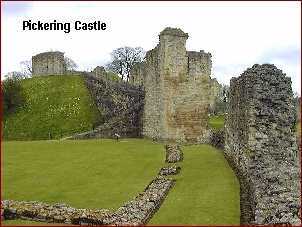 Bruce's Army set about Slighting (making unusable) the castles and extracting tribute from all the towns and villages round about. (One can pity the unfortunate Nicholas Haldane, William Hastings and John Mansregh, merchants of Pickering in North Yorkshire who were held as surety for the Tribute of 1,200 Silver Merks. They were held for three years because King Edward II refused to allow the Town to pay the ransom. In 1326, they petitioned the King who again refused. Eventually, in 1327-8 their families raised the wherewithal otherwise they would have perished in the Stirling castle prison cells.)
Bruce's Army set about Slighting (making unusable) the castles and extracting tribute from all the towns and villages round about. (One can pity the unfortunate Nicholas Haldane, William Hastings and John Mansregh, merchants of Pickering in North Yorkshire who were held as surety for the Tribute of 1,200 Silver Merks. They were held for three years because King Edward II refused to allow the Town to pay the ransom. In 1326, they petitioned the King who again refused. Eventually, in 1327-8 their families raised the wherewithal otherwise they would have perished in the Stirling castle prison cells.)
Those towns and villages that could not or would not pay were first comprehensively looted and then burnt to the ground with only the lives of the inhabitants being spared. So complete was this process that the Monasteries and Priories never recovered their former riches ever again. The Lanercost chronicles list among the vestments taken, 'a chaucible inlaid with gold and precious stones to the value of £24,000 pounds. After 6 weeks, Bruces' army made it's way back triumphantly to Scotland via Durham and Northumberland extracting tribute of eight hundred silver Merks from the Bishop of Durham (not to burn his sumptuous palace down to the ground) on the way back. Whilst on the march back, the town of Stockton was levelled after the town council refused to pay 8,000 silver Merks to ensure it's safety. A Scots cleric writing of the Inventory taken from the town valued it at 59,000 silver Merks. The Council made a poor bargain indeed! No wonder the City of Durham was willing to pay the tribute! The Treasure has never ever been properly estimated (Some estimates put it as high as 18,000,000 Silver Merks - One quarter of the entire English Treasure) as each of Bruces Soldiers must have had a portion of loot as well, but it enabled King Robert to make a start on rebuilding his realm.
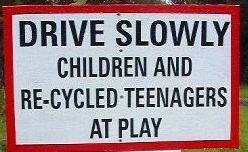
The visitor stopped briefly at a notice board by the road leading to the Yorkshire Gliding Club, it said simply '5 mph drive slowly children and recycled teenagers at play.' The visitor smiled, paused to look at his map and walked along the track where it branched off and became an old drovers road which had been used for twelve hundred years to drive cattle from Scotland and Northern England to the South.
 Following along this tree lined lane the visitor came to a small walled enclosure and within this enclosure is a small Roman Catholic Chapel built in the 1950's from the stones of the original pre-reformation church as a memorial to three former pupils of nearby Ampleforth College who were killed in the second world war.
Following along this tree lined lane the visitor came to a small walled enclosure and within this enclosure is a small Roman Catholic Chapel built in the 1950's from the stones of the original pre-reformation church as a memorial to three former pupils of nearby Ampleforth College who were killed in the second world war.
The enclosure is known as 'Scotch Corner' (Ordnance Survey sheet OL26 South 526814.) and the two double doors of the Chapel are beautifully carved with intricate Celtic knotwork and ropework designs reminiscent of the Books of Deer or Kells. Above the door a statue of the virgin holding the child Jesus looks across the enclosure and the low mounds
 beyond it, covered in young fir trees which, in reality are the last resting place of an estimated nine hundred and sixty Scots who died in the battle.
beyond it, covered in young fir trees which, in reality are the last resting place of an estimated nine hundred and sixty Scots who died in the battle.
It is a beautiful and peaceful spot surrounded by trees and the gentle soughing of the wind through the tree top branches makes a suitable coronach for the souls buried here, far from home, for the past six hundred and eighty years.
Standing beside the mounds, the visitor thinks of where these men came from, Galloway, the Lothians, the Hebridean islands, Kintyre, Loch Awe, Loch Fyne, Glenlyon and Glenorchy, Lochaber and Kintail. In his minds eye, he sees the burial details laying out the dead, the clansmen wrapped up in their long plaids for a shroud and then reverently laid into the ground.
In that place, the visitor also listens down the centuries as the spectral Pipes play their sad refrain for the dead and just possibly the echoes of a voice singing in Gaidhlig the Columban hymn for the dead.
One can almost hear the plaintive air of 'Aignish an machair' sung by the man's friends.
|
mo rosg air dunadh's a bhla gun chli. Stiuir curs an iar leam gu eilean ciatach, gu aignish sgamhach far an d' draich mi.
(When day is over and life is done
'An sin gun cairich sibh mi' san fhod
(There, please leave me by kith and kin, |
 |
There is no memorial to the men who lie here. ' Ar euchd airson luaidh sin' translates as 'our deeds speak for us!'
Leaving the Chapel the visitor makes enquiries from a local farmer who is himself an amateur archeologist and historian and when asked about the origin of the name Scotch Corner is informed, 'that is where the Scotch dead from the battle of Shaws Moor are buried'. He further volunteered the information that swords and chain mail have been found in Sword Rigg Slack, an artificial drainage ditch dug by the monks of Byland Abbey hundreds of years ago. ( Ordnance Survey sheet OL26 South 574822.) Even today metal detectorists turn up arrow heads, buckles and pieces of chain mail.
Walking back down the road the visitor found a track under Roulston Scar and there came to the gully ( Ordnance Survey sheet OL26 South 514822.) where all those years ago Sir James Douglas and Sir Thomas Randolph along with their men held off the might of the Earl of Richmond. Looking up at the Scar, is a daunting prospect. Then the visitor looks long and hard at the ground on each side of the scar, did Bruce's Clansmen really bound up those slopes? Faint echoes of 'Cruachan! Fraoich Eilean! and Gregorach!' can still be heard by those fey enough to hear them. Further away there is a large earth mound covered in young trees, nearly two hundred yards long by fifty yards wide where it is believed the bodies of nearly eight thousand English dead are buried. (Ordnance Survey sheet OL26 South 514823.)
Further up on the Scar itself is a cave which has obviously been used by human beings for thousands of years. The visitor muses , did some of the English wounded try to take refuge in this cave ? If so, what was their fate?
 Overhead the graceful sailplanes soared and wheeled before landing back on the rough grass landing strip where 680 years ago, thousands of Scotland's finest light cavalry smashed into the unprepared English lines. Dimly through the centuries the visitor can still hear 'A Bruce! A Bruce!' echoing faintly like a banshee. Going back to his car the visitor muses on the dreadful waste of life and destruction caused by an obdurate and stubborn King. Edward II even after his most humiliating disaster refused to give up his claims of paramountcy over Scotland and to recognise Robert the Bruce as rightful King of Scotland. It took a further five years before an uneasy Peace Treaty was signed by Edward III after the Lords deposed and murdered His father. This treaty was finally signed in Edinburgh after Robert the Bruce threatened to annex Northumbria, panicking the English lords into forcing the young King Edward III into signing what the English parliament later called 'That most shameful treaty.'
Overhead the graceful sailplanes soared and wheeled before landing back on the rough grass landing strip where 680 years ago, thousands of Scotland's finest light cavalry smashed into the unprepared English lines. Dimly through the centuries the visitor can still hear 'A Bruce! A Bruce!' echoing faintly like a banshee. Going back to his car the visitor muses on the dreadful waste of life and destruction caused by an obdurate and stubborn King. Edward II even after his most humiliating disaster refused to give up his claims of paramountcy over Scotland and to recognise Robert the Bruce as rightful King of Scotland. It took a further five years before an uneasy Peace Treaty was signed by Edward III after the Lords deposed and murdered His father. This treaty was finally signed in Edinburgh after Robert the Bruce threatened to annex Northumbria, panicking the English lords into forcing the young King Edward III into signing what the English parliament later called 'That most shameful treaty.'


